|

HOME |
ABOUT | INDEX |
NEWS |
FACEBOOK |
CONTACT
HOMELESS
Rejected | Kicked Out | On the Street
Homeless LGBTQ Youth
In 2017,
Chapin Hall at the University of Chicago released a
report on youth homelessness, "Missed Opportunities:
National Estimates," which found that LGBTQ young adults
had a 120 percent higher risk of reporting homelessness
compared to youth who identified as heterosexual and
cisgender. The report also found that one in 30 youth
ages 13-17 experienced a form of homelessness over a
12-month period and one in 10 young adults ages 18-25
experienced a form of homelessness over a 12-month
period.
These findings are consistent with other research that
also shows that LGBTQ youth are overrepresented among
the homeless. Estimates show that LGBTQ youth comprise
up to 40 percent of the total unaccompanied homeless
youth population, even though they make up five to 10
percent of the overall youth population.
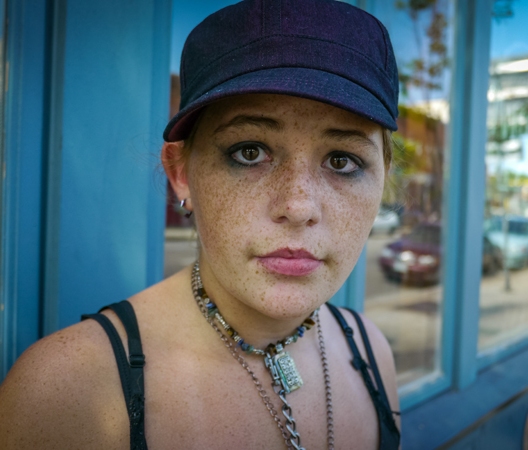
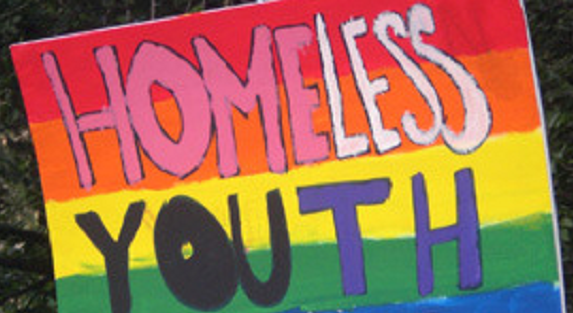
LGBTQ youth aren’t the only population that
disproportionately experience homelessness, according to
the data. Other young adult populations experiencing
disproportionate rates of homelessness include Black and
African American youth, Hispanic non-white youth,
unmarried parenting youth, youth with less than a high
school diploma or GED certificate and youth reporting
annual household income of less than $24,000.
The consequences of homelessness, particularly for LGBTQ
youth, are far reaching and can last a lifetime.
Homelessness is harmful to mental and physical health,
and youth who are homeless are at an increased risk for
sexual abuse and exploitation, chemical and alcohol
dependency, social stigma and discrimination. These
youth also experience lower levels of long-term
educational attainment—placing them at an even greater
disadvantage when they enter the job market. Growing up
without the critical family and social safety nets so
many young people rely on results in catastrophic
consequences for economic stability, educational
attainment and life expectancy.
Little support exists at the federal level to provide
funding for programs that improve family relationships
and reduce homelessness among LGBTQ youth. As a result,
homeless youth, particularly LGBTQ youth, continue to
face severe obstacles in their emotional and
professional development.
NYC Opens First Publicly Funded Homeless Shelter for
Transgender People
Battle to Protect LGBTQ Homeless Youth
San Diego Opens a Shelter for Homeless
LGBTQ Youth
Missed Opportunities: LGBTQ Youth Homelessness in
America
Ali Forney Center for
Homeless LGBTQ Youth
Video Report: Harsh Reality of LGBTQ Homeless Youth
HRC Report: LGBTQ Youth at Higher Risk for Homelessness
Lambda Legal: Working With LGBTQ Homeless Youth
Info: LGBTQ Youth Issues
Covenant House: Homeless LGBTQ Youth
United Nations Report: LGBTQ Homeless Youth
National Coalition for the Homeless
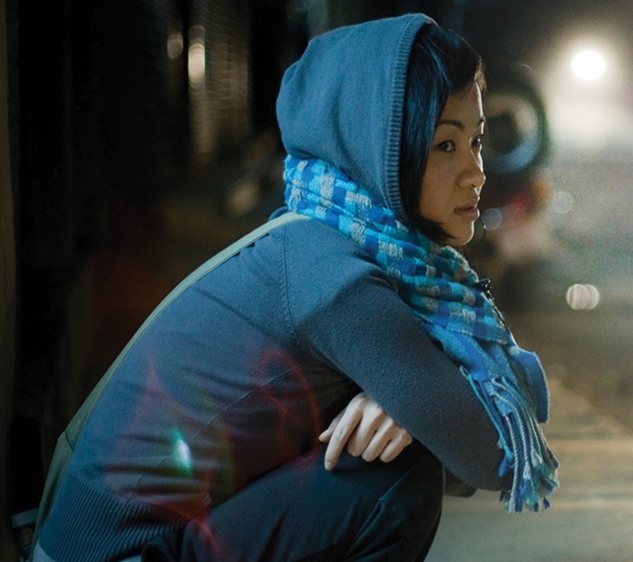
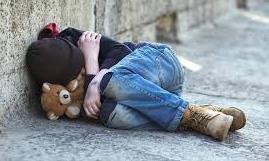
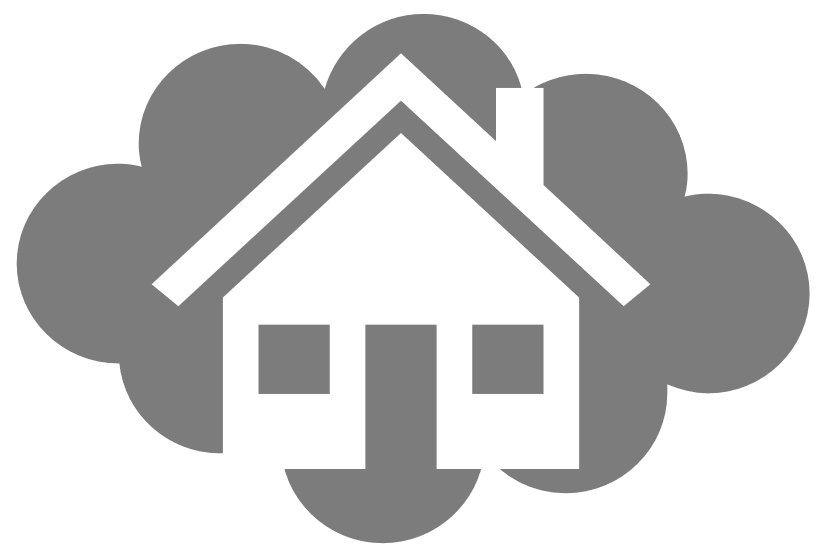
Runaways and
Rejection
Lesbian,
gay, bisexual, transgender, queer, and questioning youth
become homeless at rates that should alarm anyone
working in the child welfare and shelter care systems.
Many LGBTQ youth feel compelled to run away from their
families or child welfare placements after their
physical and emotional safety is jeopardized. Others are
thrown out of their homes with nowhere to go but the
streets. Still others have aged out of the child welfare
system, unprepared to support themselves and without a
permanent place to live. If the out-of-home systems of
care are not safe and appropriate for LGBTQ youth, these
young people attempt to forge a life on the streets
rather than seek services and supports from these
systems.
Family rejection on the basis of sexual orientation or
gender identity can have extreme effects on LGBTQ youth.
In one study, lesbian, gay and bisexual youth who
reported higher levels of family rejection during
adolescence were 8.4 times more likely to report having
attempted suicide, 5.9 times more likely to report high
levels of depression, 3.4 times more likely to use
illegal drugs and 3.4 times more likely to report having
engaged in unprotected sexual intercourse, compared to
peers from families that reported no levels of family
rejection. As a result of family rejection,
discrimination, criminalization and a host of other
factors, LGBTQ youth represent as much as 40% of the
homeless youth population. Of that population, studies
indicate that as many as 60% are likely to attempt
suicide.
[Source:
Lambda Legal]
Trevor Project: LGBTQ Youth Homelessness
LGBTQ Youth: More Likely to Be Homeless
London Mayor Sadiq Khan announces LGBTQ Homeless Shelter
Funding
Homelessness and the Death I Fear As a Queer Black
Person
Can You See Me: LGBTQ
Homeless Youth
Photos: Images of LGBTQ Homeless Youth
Homelessness Among LGBTQ Youth
TED Talk: Walking in Your
Truth as a Homeless Trans Youth
Invisible People: Stats on Homeless Youth
True Colors Fund
No Place to Go: Getting Gay Teens Off the Street
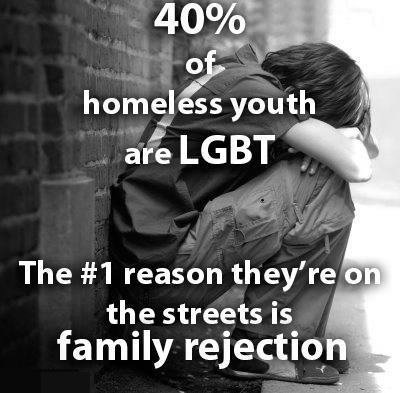
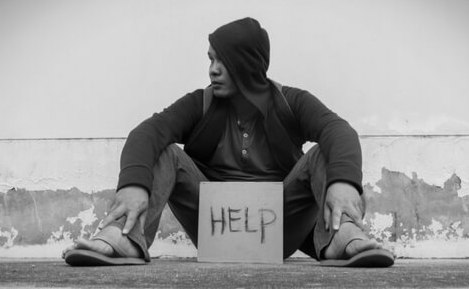
Report Paints
Bleak Picture for LGBTQ Youth Experiencing Homelessness
A new report by the Trevor Project found that 28 percent
of LGBTQ youth have experienced homelessness or housing
instability at some point in their lives. The study,
titled “Homelessness and Housing Instability Among LGBTQ
Youth,” found that those who did encounter housing
issues had two to four times the odds of reporting
depression, anxiety, self-harm, considering suicide, and
attempting suicide compared to those with stable
housing.
Among the group's key findings, nearly half (44 percent)
of Native/Indigenous LGBTQ youth experienced
homelessness or housing instability at some point in
their life. This is compared to 16 percent of
Asian-American/Pacific Islander LGBTQ youth, 27 percent
of white LGBTQ youth, 27 percent of Latinx LGBTQ youth,
26 percent of Black LGBTQ youth, and 36+ of multiracial
LGBTQ youth.
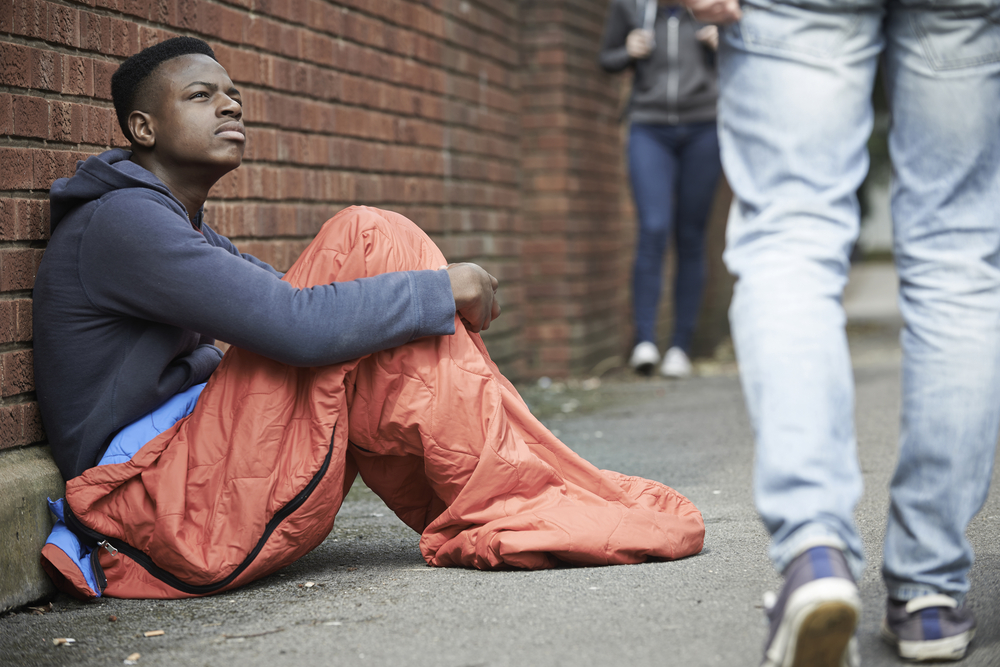
NYC Opens First Publicly Funded Homeless Shelter for
Transgender People
Report Paints Bleak Picture for LGBTQ
Youth Experiencing Homelessness
Rewriting the Narrative About LGBTQ Youth
Homelessness
Covenant House: Homeless LGBTQ Youth
Missed Opportunities: LGBTQ Youth Homelessness in
America
Video Report: Harsh Reality of LGBTQ Homeless Youth
HRC Report: LGBTQ Youth at Higher Risk for Homelessness
Lambda Legal: Working With LGBTQ Homeless Youth
Ali Forney Center for
Homeless LGBTQ Youth
Homelessness Among LGBTQ Youth
Invisible People: Stats on Homeless Youth
True Colors Fund
No Place to Go: Getting Gay Teens Off the Street
Transgender and nonbinary youth both had higher rates of
homelessness and housing instability. Transgender girls
and women experienced homelessness at a rate of 38
percent. For transgender boys and men, the rate was 39
percent. And 35 percent of nonbinary youth experienced
homelessness compared to 23 percent of cisgender LGBQ
youth.
Sixteen percent of LGBTQ youth reported that they had
slept away from their parents or guardians because they
ran away from home. More than half of them (55 percent)
reported running away due to mistreatment or fear of
mistreatment because of their LGBTQ identity. Another 14
percent of LGBTQ youth had slept away from parents or
guardians because they were kicked out or abandoned,
according to the Trevor Project's report. Forty percent
reported being kicked out or abandoned due to their
LGBTQ identity.
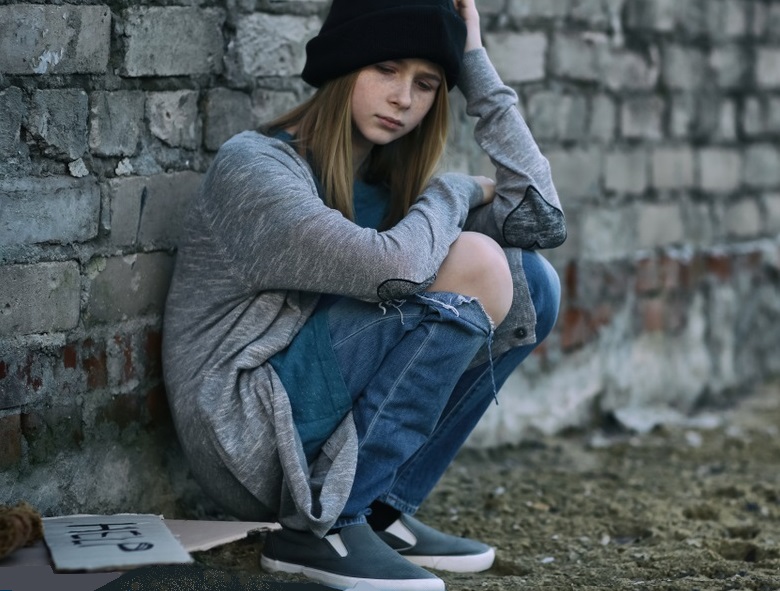
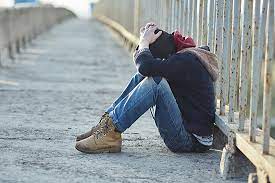
Missed Opportunities: LGBTQ Youth Homelessness in
America
LGBTQ Homeless People: Current Statistics
Video Report: Harsh Reality of LGBTQ Homeless Youth
HRC Report: LGBTQ Youth at Higher Risk for Homelessness
Lambda Legal: Working With LGBTQ Homeless Youth
Info: LGBTQ Youth Issues
London Mayor Sadiq Khan announces LGBTQ Homeless Shelter
Funding
United Nations Report: LGBTQ Homeless Youth
The Trevor Project recommended that to improve the
plight of homeless LGBTQ youth, strong
antidiscrimination and antibullying policies are needed
— that includes in the workplace and in schools.
Increased access to family counseling or mediation is
also recommended in order to decrease family conflict.
Other suggestions include additional funding for
low-income housing, reimagining shelter services,
improving data collection on LGBTQ youth homelessness,
and instituting anti-poverty economic policies that
combat poverty at the societal level.
Jonah DeChants, one of the authors of the study and a
research scientist, said that the report “paints a
pretty serious picture about the need to provide better
mental health services for folks who are experiencing
housing instability.”
“When you start adding homophobia, plus racism or
transphobia, plus anti-Indigenous racism,” DeChants
said, “then we again start to see that young people who
are experiencing multiple forms of marginalization and
oppression — those are the folks who tend to be pushed
out of housing supports and experiencing homelessness.”
[Source: John Casey, Advocate Magazine, Feb 2022]
National Coalition for the Homeless
San Diego Opens a Shelter for Homeless
LGBTQ Youth
Trevor Project: LGBTQ Youth Homelessness
Ali Forney Center for
Homeless LGBTQ Youth
Covenant House: Homeless LGBTQ Youth
Homelessness and the Death I Fear As a Queer Black
Person
LGBTQ Youth: More Likely to Be Homeless
Photos: Images of LGBTQ Homeless Youth
Troye Sivan Speaks to LGBTQ Youth About Being Homeless
Homelessness Among LGBTQ Youth
Invisible People: Stats on Homeless Youth
True Colors Fund
No Place to Go: Getting Gay Teens Off the Street
Prevalence of
LGBTQ Homelessness
Although
specific estimates of the percentage of United States
homeless youth who identify as LGBTQ vary widely,
estimates generally fall somewhere between 11 and 40
percent. Barriers to a more definitive percentage
include the lack of a nationally representative study
and the possibility of underreporting due to stigma
associated with identifying as LGBTQ. The city from
which the sample is drawn for each study may also
account for a difference in estimates. For example, one
2004 study at the University of Nebraska Lincoln noted
that while estimates based on samples from Los Angeles
range from 25 to 40 percent, a 1999 study of small and
medium Midwestern cities concluded that only 6% of
homeless youth there identified as LGBTQ. According to
the authors of this study, geographical location could
affect these numbers. For example, due to the higher
risk of coming out in rural, midwestern cities, youth
may be more likely to either stay closeted there or to
migrate to larger cities. Further, the authors continue,
the differences might reflect differences in the ages of
the samples in the different studies, or other
differences in sampling methodology. The study concludes
that when taken together, a general consensus can be
found among the studies that 20% of homeless youth in
magnet studies identify as gay, lesbian or bisexual,
with the number being slightly lower in non-magnet
cities.
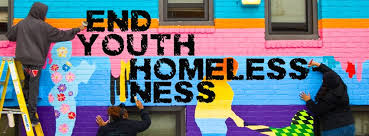
TED Talk: Walking in Your
Truth as a Homeless Trans Youth
Trevor Project: LGBTQ Youth Homelessness
Ali Forney Center for
Homeless LGBTQ Youth
LGBTQ Youth: More Likely to Be Homeless
Photos: Images of LGBTQ Homeless Youth
Homelessness Among LGBTQ Youth
Invisible People: Stats on Homeless Youth
True Colors Fund
No Place to Go: Getting Gay Teens Off the Street
In a 2012
study, legal expert Nusrat Ventimiglia noted that
studies focusing on the number of transgender youth who
experience homelessness are less prevalent, and
therefore including youth who identify as transgender
but not as gay, lesbian or bisexual could result in an
estimate of 40 percent.
Researchers have posed a few core explanations for the
overrepresentation of LGBTQ youth in the general United
States homeless youth population. LGBTQ youth are more
likely to be homeless because they run away or are
evicted due to family conflict surrounding their sexual
orientation or behavior. This explanation is supported
by a 2011 survey study of a representative Massachusetts
high school sample that found that LGBTQ youth were no
more likely to be homeless and living with their parents
than non-LGBTQ youth. Therefore, according to the
study's authors, it may not be that LGBTQ youth are more
likely to be part of a homeless family, but rather that
their higher rate of homelessness is caused by being
more likely to be evicted or run away. A 2008 study
using in-person interviews found that among youth who
experienced homelessness for more than six months,
lesbian, gay, and bisexual youth were more likely than
heterosexual youth to report being verbally or
physically harassed by family. In addition, LGBTQ youth
are more likely to be homeless due to physical or sexual
abuse experienced at home.
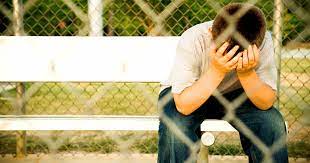
The
Hetrick-Martin Institute showed that among homeless
queer girls aged 13–15 in New York City, that 50% of
them were homeless because they were fleeing familial
corrective rape. In the background of both these
explanations is the fact that, since the family
conflicts associated with LGBTQ youth occur relatively
late in a youth's development, LGBTQ youth are much less
likely to be placed in foster care. Those who are placed
in a foster home find an unwelcoming or hostile
environment, and a study on the New York City Child
Welfare System reported 78% of LGBTQ youth were kicked
out, or ran away from their foster home as a result. A
number of other factors that lead to increased risk of
homelessness in adolescents disproportionately affect
LGBTQ youth, such as experiencing conflict at school.
Ali Forney Center for
Homeless LGBTQ Youth
NYC Opens First Publicly Funded Homeless Shelter for
Transgender People
Missed Opportunities: LGBTQ Youth Homelessness in
America
Video Report: Harsh Reality of LGBTQ Homeless Youth
Covenant House: Homeless LGBTQ Youth
HRC Report: LGBTQ Youth at Higher Risk for Homelessness
Can You See Me: LGBTQ
Homeless Youth
Lambda Legal: Working With LGBTQ Homeless Youth
Info: LGBTQ Youth Issues
London Mayor Sadiq Khan announces LGBTQ Homeless Shelter
Funding
United Nations Report: LGBTQ Homeless Youth
National Coalition for the Homeless

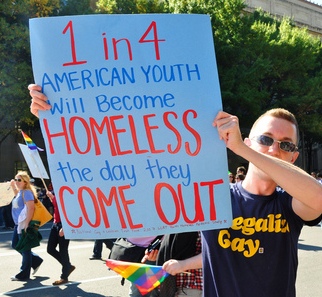
Research
Findings on LGBTQ Homeless Youth
LGBTQ youth in America are highly diverse and experience
homelessness differently. Nevertheless, several key
findings about their experiences point the way toward
policies, systems, and services that LGBTQ youth need:
--LGBTQ youth had over twice the rate of early death
among youth experiencing homelessness.
--LGBTQ youth are at more than double the risk of
homelessness compared to non-LGBTQ peers.
--Youth who identified as both LGBTQ and black or
multiracial had some of the highest rates of
homelessness.
--Among youth experiencing homelessness, LGBTQ young
people reported higher rates of trauma and adversity.
--Transgender youth often face unique and more severe
types of discrimination and trauma
The research also showed that most LGBTQ youth became
homeless not in the immediate aftermath of “coming out”
but in large part as the result of family instability
and frayed relationships over time. Lastly, young
people’s sense of whether service agencies were safe and
affirming spaces for LGBTQ youth often informed their
decisions about whether to engage with them.
These findings signal opportunities for preventing
homelessness and underscore the importance of services
that help young people re-establish positive and
reliable connections in their lives.
San Diego Opens a Shelter for Homeless
LGBTQ Youth
United Nations Report: LGBTQ Homeless Youth
LGBTQ Homeless People: Current Statistics
Info: LGBTQ Youth Issues
National Coalition for the Homeless
Trevor Project: LGBTQ Youth Homelessness
LGBTQ Youth: More Likely to Be Homeless
Photos: Images of LGBTQ Homeless Youth
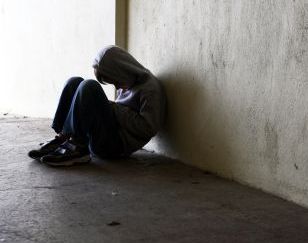
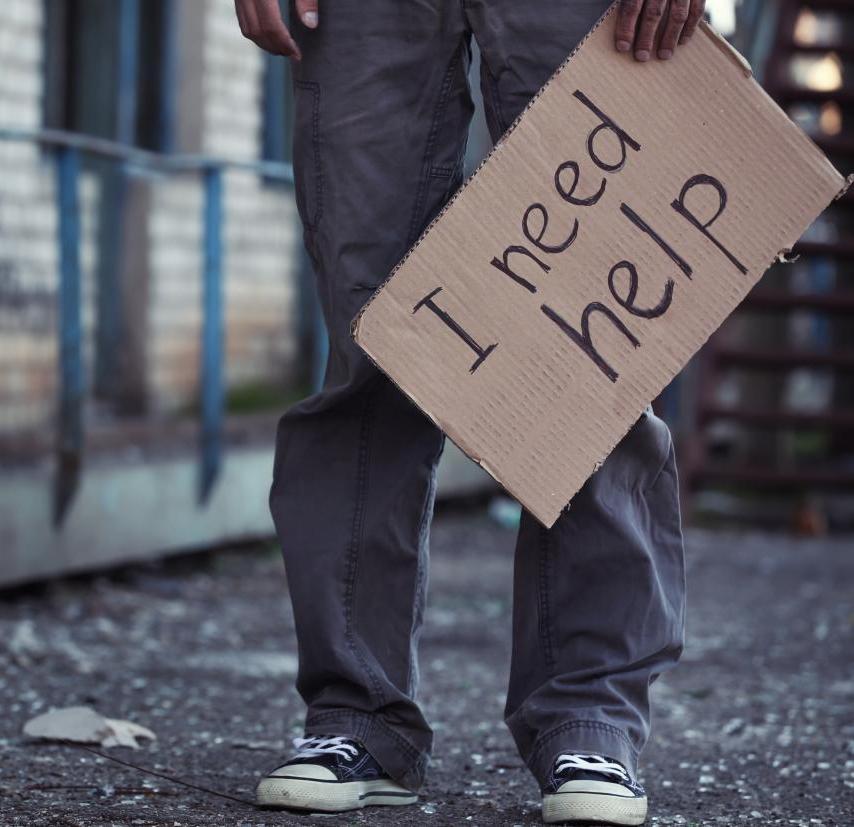
Missed Opportunities: LGBTQ Youth Homelessness in
America
Video Report: Harsh Reality of LGBTQ Homeless Youth
Ali Forney Center for
Homeless LGBTQ Youth
HRC Report: LGBTQ Youth at Higher Risk for Homelessness
Lambda Legal: Working With LGBTQ Homeless Youth
Info: LGBTQ Youth Issues
United Nations Report: LGBTQ Homeless Youth
LGBTQ Homeless People: Current Statistics
National Coalition for the Homeless
LGBTQ
youth are at high risk for homelessness compared to
other groups...
LGBTQ youth have an especially high risk for
homelessness. According to the national survey,3 young
adults, ages 18 to 25, who identified as LGBTQ
experienced homelessness within the last 12 months at
over twice the rate of their heterosexual and cisgender
peers. Young
people who identified as LGBTQ made up about 20% of
those young adults who reported homelessness. In larger,
urban communities, the proportions of youth experiencing
homelessness who identified as LGBTQ were higher than
for smaller, more rural communities, and reached up to
40% of homeless youth in one county’s youth count.
Given that many young people may be reluctant to
disclose their sexual orientation or gender identity in
a survey, these statistics should be viewed as
conservative estimates, especially in households and
communities where there is less acceptance of LGBTQ
people.
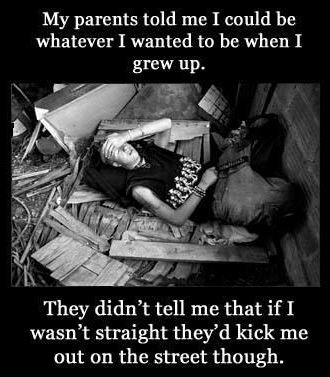
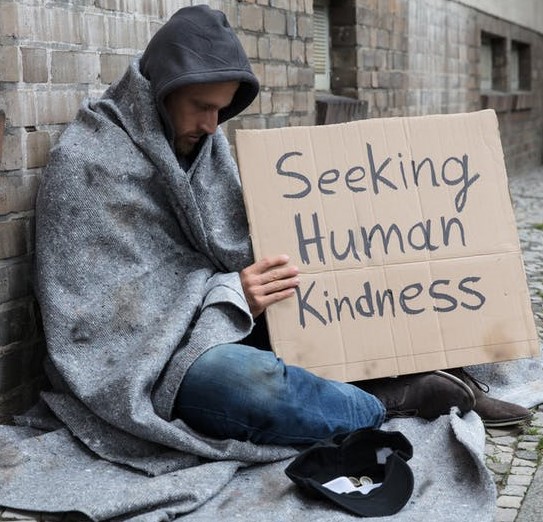
San Diego Opens a Shelter for Homeless
LGBTQ Youth
Trevor Project: LGBTQ Youth Homelessness
NYC Opens First Publicly Funded Homeless Shelter for
Transgender People
Covenant House: Homeless LGBTQ Youth
LGBTQ Youth: More Likely to Be Homeless
Photos: Images of LGBTQ Homeless Youth
Homelessness Among LGBTQ Youth
Invisible People: Stats on Homeless Youth
True Colors Fund
No Place to Go: Getting Gay Teens Off the Street
LGBTQ
youth experience high levels of adversity, including
early death...
Youth experiencing homelessness generally have much
higher rates of early death than their stably housed
peers. Based on analysis of homelessness management
information system (HMIS) data across 16 communities, we
found that LGBTQ youth had over twice the rate of early
death among youth experiencing homelessness.
Similarly, while virtually all youth facing homelessness
experience adversity, LGBTQ youth describe particularly
pervasive exposure to trauma both before and during
their periods of homelessness. In the in-depth
interviews, individuals who identified as LGBTQ reported
more physical harm from others versus their non-LGBTQ
peers (62% vs. 47%) and more harm to themselves (25% vs.
15%). Identifying as LGBTQ was associated with much
higher rates of experiencing discrimination or stigma
within the family (64% vs. 37%) and outside of the
family (60% vs. 37%). LGBTQ young people were also more
likely to report exchanging sex for basic needs (27% vs.
9%) and having been forced to have sex (38% vs. 15%).
These findings illustrate why it is critical that new
efforts emerge to integrate safe spaces, rapid and
sustained exits from homelessness, positive adult
connections, and culturally attuned mental and physical
health supports into service plans for LGBTQ young
people.

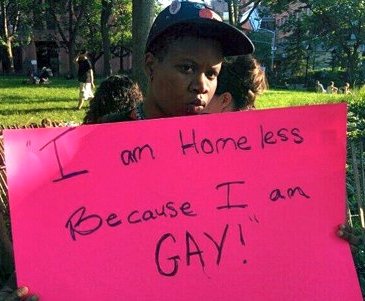
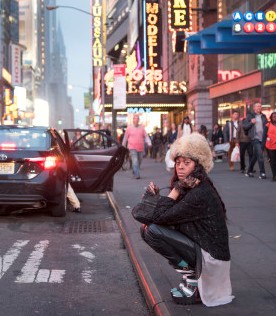
Missed Opportunities: LGBTQ Youth Homelessness in
America
Video Report: Harsh Reality of LGBTQ Homeless Youth
HRC Report: LGBTQ Youth at Higher Risk for Homelessness
Lambda Legal: Working With LGBTQ Homeless Youth
TED Talk: Walking in Your
Truth as a Homeless Trans Youth
Info: LGBTQ Youth Issues
London Mayor Sadiq Khan announces LGBTQ Homeless Shelter
Funding
National Coalition for the Homeless
Trevor Project: LGBTQ Youth Homelessness
Homelessness and the Death I Fear As a Queer Black
Person
Can You See Me: LGBTQ
Homeless Youth
Homelessness stems from multiple factors beyond “coming
out” among LGBTQ youth...
Common notions of LGBTQ youth being evicted by families
into homelessness after “coming out” are overly
simplistic and obscure important opportunities for
family-based intervention to prevent youth homelessness.
According to our in-depth interviews, homelessness was
rarely an “event” in which young people immediately
shifted abruptly from stable housing to homelessness.
While coming out to parents and identifying as gay,
lesbian, bisexual, or transgender mattered, these youth
typically described a gradual escalation of the
parent-child conflict over time, or a growing sense of
rejection in the home, rather than an immediate reaction
to the disclosure that caused homelessness. The positive
implication is that there is often more time and
opportunity than commonly assumed to intervene with
LGBTQ youth and their families to prevent difficult
situations from devolving into homelessness.
Typically, the young person’s sexual orientation or
gender identity is only one factor involved in household
tensions. Most families also faced broader issues of
instability, including poverty, loss, violence,
addiction, mental health problems, or housing troubles.
These dynamics preceded, or coincided with, the youth’s
identity or coming out process.
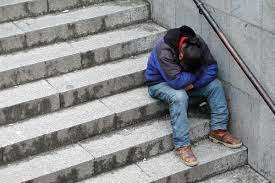
LGBTQ Youth: More Likely to Be Homeless
Photos: Images of LGBTQ Homeless Youth
Troye Sivan Speaks to LGBTQ Youth About Being Homeless
Homelessness Among LGBTQ Youth
Invisible People: Stats on Homeless Youth
LGBTQ Homeless People: Current Statistics
True Colors Fund
No Place to Go: Getting Gay Teens Off the Street
Ali Forney Center for
Homeless LGBTQ Youth
Covenant House: Homeless LGBTQ Youth
Additionally, discrimination that youth faced within
their families often came from a parent’s significant
other or a sibling. As Isabel’s story illustrates, the
rejection youth experience in their families can differ
from one family member to another and can be shaped by
differences in the stigma attached to gender versus
sexual identity. The fact that homelessness was often
the product of escalated tension over time for many
LGBTQ young people suggests that there is an opportunity
to support young people and their families at earlier
stages of difficulty. The findings also suggest that
intervening around other stressors that families face
(like poverty, single parenthood, parental addiction,
mental health) could have direct positive
implications for addressing this subpopulation’s
homelessness.
Families are sources of both hardship and strength.
While family relations can be a source of rejection for
LGBTQ young people, they often have allies within the
same household or extended family network who are and
can be important resources for programs and systems to
engage in young people’s service plans. Isabel, for
example, maintained a strong relationship with her
grandmother even as her parents abused and disowned her.
Family engagement can be tremendously powerful for young
people in kindling or rekindling positive connections to
promote healing individually and at the family level.
For LGBTQ youth, finding positive connections outside of
the biological family is also especially important. One
young person, Joe, spoke of the importance of
connections at his local agency for LGBTQ youth where he
felt safe and affirmed, “I gained family and friends
there. I’d rather see them more than my friends.” Given
this level of comfort, Joe fully engaged with and
trusted this provider. He now benefits from their
services, “They gave me resources and staff to talk to.
They were real kind in really helping me out. And they still help me out to this day.” Joe’s experience is
consistent with previous evidence on the benefits of LGBTQ youth having social supports from peers and
non-family adults—often who themselves identified as
LGBTQ. In a world of negative, conflicting, or
inaccurate messages about being lesbian, gay, bisexual,
transgender, or queer, these LGBTQ-accepting connections
can be critical.
London Mayor Announces LGBTQ Homeless Shelter
Funding
Report Paints Bleak Picture for LGBTQ
Homeless Youth
Rewriting the Narrative About LGBTQ Youth
Homelessness
Homelessness and the Death I Fear As a Queer Black
Person
Knitters Helping Homeless LGBTQ Youth
Missed Opportunities: LGBTQ Youth Homelessness in
America
Video Report: Harsh Reality of LGBTQ Homeless Youth
HRC Report: LGBTQ Youth at Higher Risk for Homelessness
Lambda Legal: Working With LGBTQ Homeless Youth
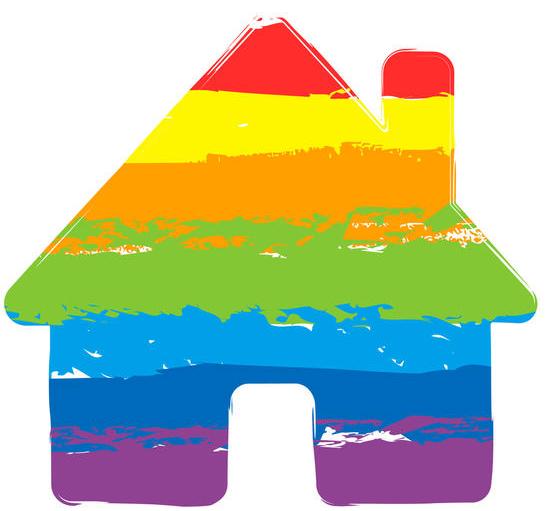
Safe,
affirming responses and services are important for
engaging LGBTQ youth...
Offering services is not enough for young people to
access them. Young people judge an agency’s reputation
before engaging. Even young people in crisis have
options and personal agency to choose among them. Our
research showed that young people’s identity as LGBTQ
was not the only lens through which they made decisions
about engaging services, but it was often an important
one.
As the findings highlight, most LGBTQ youth experiencing
homelessness have withstood discrimination, bullying,
exploitation, and/or violence in their grueling journeys
into and through homelessness. Against these life
backdrops, LGBTQ youth are often hesitant to take added
risks by engaging services that are not demonstrably
safe and affirming for young people like them. Youth
most often learned about these risks from their own
experiences as well as from other youth who had direct
experience with a particular service system or provider
agency. They often calculated their decision to engage
with an agency against the risks of staying on the
streets or getting by without formal supports. Consider
Jess’s experience as a transgender young woman
navigating services. “Having appropriate mental health
care is so important,” she believed, but she also
described barriers to treatment.
Young people want to be accepted and seen not simply for
their sexual or gender identity, but as holistic and
valuable human beings with multidimensional identities
and stories of both struggle and resilience. As one
youth, Dan, noted, the resources would be better “if the
community was a lot more accepting (not just accepting
me as LGBTQ) but
accepting me as a person who is
struggling with, for instance, drug issues or just
abusive parents or homelessness.” Young people in the
study needed to feel nurtured and affirmed for their LGBTQ identities, but this was not the whole of how they
understood themselves or the sole extent of their needs
for support or resources. Overall, LGBTQ youth preferred
engaging in services that recognized and reinforced
their strengths and personal agency.
[Source:
Chapin Hall, University of Chicago, "Missed
Opportunities: National Estimates," November 2017]
Missed Opportunities: LGBTQ Youth Homelessness in
America
Video Report: Harsh Reality of LGBTQ Homeless Youth
HRC Report: LGBTQ Youth at Higher Risk for Homelessness
Lambda Legal: Working With LGBTQ Homeless Youth
TED Talk: Walking in Your
Truth as a Homeless Trans Youth
Info: LGBTQ Youth Issues
National Coalition for the Homeless
San Diego Opens a Shelter for Homeless
LGBTQ Youth
Trevor Project: LGBTQ Youth Homelessness
Can You See Me: LGBTQ
Homeless Youth
LGBTQ Youth: More Likely to Be Homeless
Photos: Images of LGBTQ Homeless Youth
Troye Sivan Speaks to LGBTQ Youth About Being Homeless
Homelessness Among LGBTQ Youth
London Mayor Sadiq Khan announces LGBTQ Homeless Shelter
Funding
Invisible People: Stats on Homeless Youth
LGBTQ Homeless People: Current Statistics
True Colors Fund
No Place to Go: Getting Gay Teens Off the Street
HOME
QUEER CAFE
│ LGBTQ Information Network │ Established 2017 |